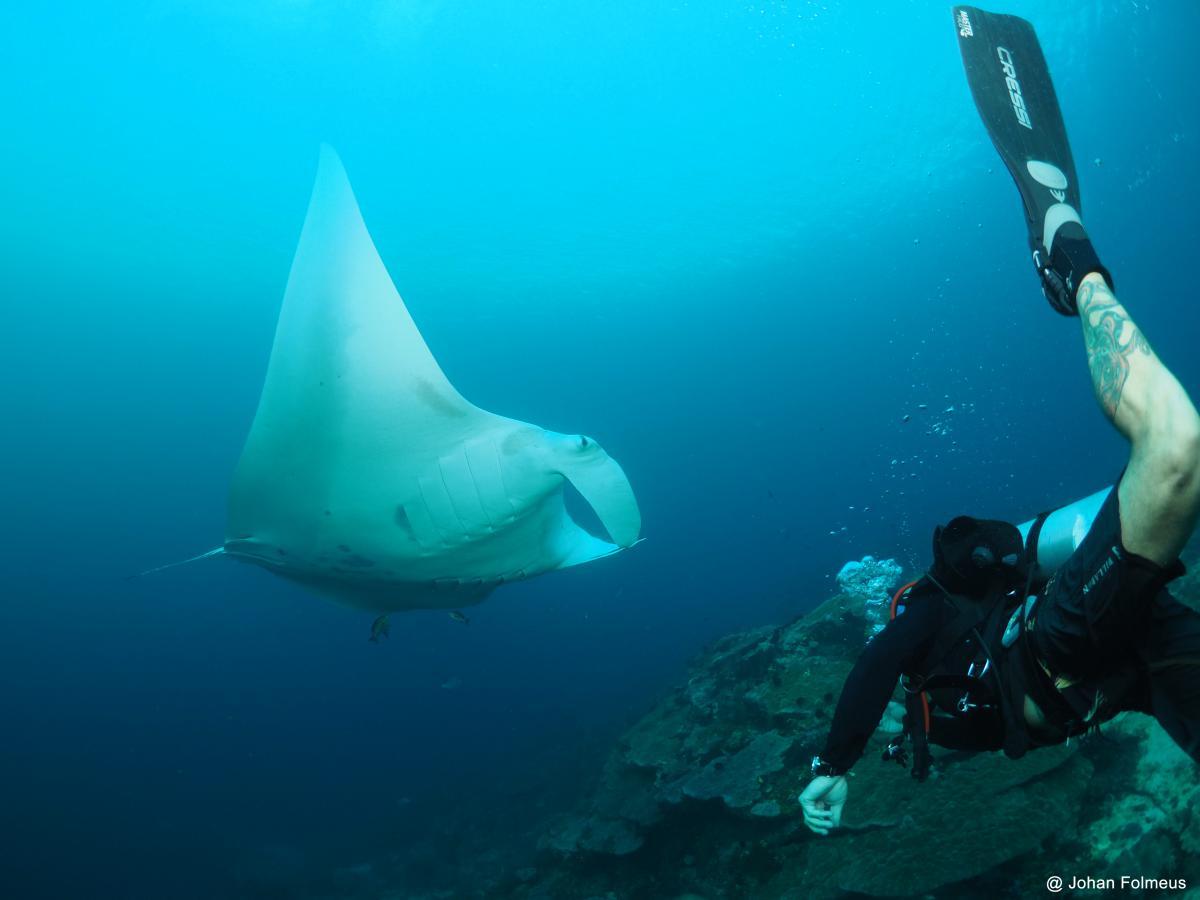One of the most exciting, and therefore popular, creatures scuba divers get to see is the Manta Ray. The most-often sighted species in the Indo-Pacific region is the Reef Manta (Manta alfredi) while there are some sightings of the Giant Oceanic Manta (Manta birostris). The Giant Oceanic Manta Ray is larger than the Reef Manta Ray and has slightly different colouration. Many divers get excited when they see a Manta Ray, and may exaggerate its size. This is not helped by everything appearing larger in the water. Therefore, sizes can become ambiguous which doesn’t aid correct identification. The Manta Ray is many scuba divers’ favourite animal for several reasons. These include their size, the fact that they’re quite rare, and the way that they interact with scuba divers.
The Manta Ray is huge!
The exact size of any creature in the sea is a debatable topic unless you are able to actually get it out of the water and measure it properly. What doesn’t help is when people tend to exaggerate, whether or not they do it consciously. According to research, Manta Rays can grow to be ‘several metres’ from wingtip to wingtip. 3-4 metres is a common size for Reef Mantas in South-East Asia.
Can They Hurt or Harm Divers?
No. They have no teeth because they’re filter feeders that sieve plankton while they swim through the water. And unlike stingrays that spend a lot of time on the sandy seabed, they have no need for a venomous barb in their tails. Although huge, the Manta Ray poses no threat to humans.

What Are They?
Manta Rays are in the same group of animals as sharks. They are fish, but their skeletons are made of cartilage, not hard bone.

Manta Ray Behaviour
Manta Rays are the most-intelligent fish species. This is because they have the largest brains of any fish, in relation to their body size. Their intelligence is evident in their behaviour. They appear to ‘play with’ scuba divers, by swimming above the divers’ bubbles and returning time and again, in circular swim patterns. Sometimes Manta Rays breach (jump) out of the sea. Some people claim that they do this to remove parasites from their bodies, while others believe that they do this when giving birth.
Humans & Manta Rays
Sadly, due to their friendly behaviour and swimming slowly near the surface, Manta Rays are sometimes caught and killed for their flesh and fins. Recently, Indonesia made all fishing of Manta Rays illegal and the country created the largest protection area in the world. Divers and snorkellers should never chase or try to touch a Manta Ray. Not only could this affect the ray’s future interactions with humans, it will almost certainly cause it to swim away into deep water. If you see one, stay still and enjoy the moment. It is very likely that the Manta Ray is also interested in you and will hang around for a while.
 Scuba diver & Manta ray
Scuba diver & Manta ray
 Fantastic sight seeing these huge Manta Rays
Fantastic sight seeing these huge Manta Rays


